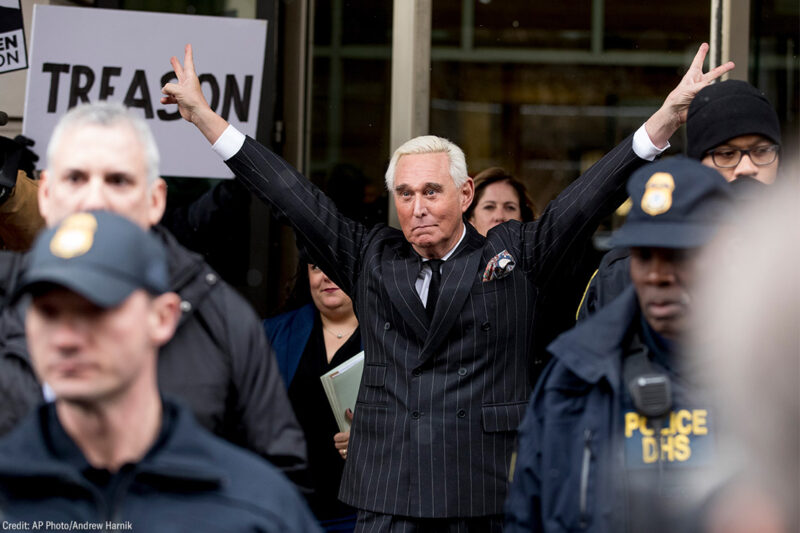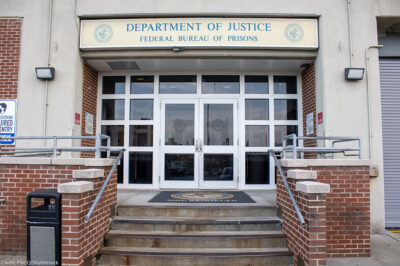While Trump Protects His Cronies, Governors can Use That Same Power to Protect the Most Vulnerable


Since Roger Stone’s commutation first made news, politicians on both sides of the aisle have been quick to condemn Donald Trump’s grant of clemency to his long-time confidant. House Speaker Nancy Pelosi has even gone so far as to threaten legislation that would curtail the president’s clemency powers, and other elected officials have shared similar outrage.
Their scorn is well-founded. “This is the most corrupt and crony-istic act in perhaps all of recent history,” legal expert Jeffrey Toobin told CNN, with his ire centered in part on the notion that Roger Stone will never have served any time in prison.
Yet for as livid as both the public and elected officials are with the president’s persistent amoral flouting of judicial norms and democratic ideals, part of that anger should stem from the fact that Trump could use his clemency powers to actually do good — to actually save lives by liberating people who, unlike Roger Stone, are trapped in prison. So, too, could governors.
Many governors possess the same clemency powers as the president, yet far too few have exercised that power to save the lives of people incarcerated in state prisons during the COVID-19 pandemic. When clemency is exercised at the state level, it is often done in much the same way President Trump has done it: on an individualized, case-by-case basis, where only a lucky few are offered the shot at redemption that clemency uniquely offers. That must change, and the change starts with an honest assessment of what we have seen play out over the past few months.
The lack of gubernatorial response to the spread of COVID-19 in jails and prisons is a policy failure made all the more noticeable by the voice and volume of those who shed light on this issue. Since the outset of the pandemic, public health experts unequivocally stated that getting people out of jails and prisons must be part of any state’s response to the Coronavirus. Research proved that ignoring COVID-19 in carceral facilities would have deep, fatal reverberations in neighboring communities. Given the decentralized nature of states’ criminal legal systems — with literally hundreds of actors, from police to prosecutors to judges, playing a role — it was clear that leadership from the top, particularly from governor’s offices, was crucial. This leadership was not just critical; it also had public support: Polling showed wide bipartisan support for governors to use their power of commutation to release people from prison as a response to the pandemic.
So, what happened? The answer is clear. As a recent ACLU Campaign for Smart Justice and Prison Policy Initiative Report revealed, governors largely failed to respond, and the tragedy unfolding in our nation’s jails and prisons is as devastating as it was predictable. Nine of the 10 largest COVID-19 clusters are now in jails or prisons, and nearly 700 incarcerated people and over 50 staff have died as a result of governors’ failures in this moment.
It’s time that we hold governors accountable in a way that speaks to the power they have but are largely unwilling to use. Governors must use their powers of clemency to reduce prison populations by issuing broad, categorial commutations — say, for all incarcerated people over a certain age. The use of such power in moments of calm would have made and can still make use of that power during an all-encompassing crisis feel politically feasible and immediately practical.
Reducing prison populations can be difficult: People in prison have largely been sentenced to be there following a conviction. The integrity of that conviction aside, release via parole can be an inaccessible or unduly burdensome process, and legislative reforms that would change sentencing laws are usually not made retroactive. That means that for most of the people in state prisons, a governor’s granting them clemency — a gubernatorial acknowledgement of their right to redemption — is the only chance they have of timely release and pathway to hope and healing.
Furthermore, reductions in prison populations made possible by broad, categorical commutations are vital even without a pandemic ravaging incarcerated populations. States spend $43 billion on prisons every year to imprison 1.3 million people. And the people who could immediately receive commutations are plentiful. Nearly 165,000 of those 1.3 million people in state prisons are over the age of 55, and the number of elder incarcerated people continues to grow. Moreover, at least 578,000 people are incarcerated for “nonviolent” conduct. Going further, 191,000 people in state prisons are there for convictions related to drug charges and are denied needed resources or support as long as they are incarcerated. Further still, there are 280,000 people imprisoned for supervision violations, as probation and parole have failed to divert people out of the system, and have instead done the opposite: become primary drivers of mass incarceration.
Given the moral and economic necessity of decarceration, and the speed with which governors could release people in their states, there is no longer an excuse for governors to remain on the sidelines in the fight for justice reform and slashing the nation’s incarcerated population. As much as we may decry President Trump’s flagrant exploitation of his clemency powers, we should be demanding that governors use those same powers to push back against the brutal, racist excesses of our country’s mass incarceration machinery. Until they do, the price that communities pay will continue to be measured by the humanity and lives lost in our nation’s prisons.


